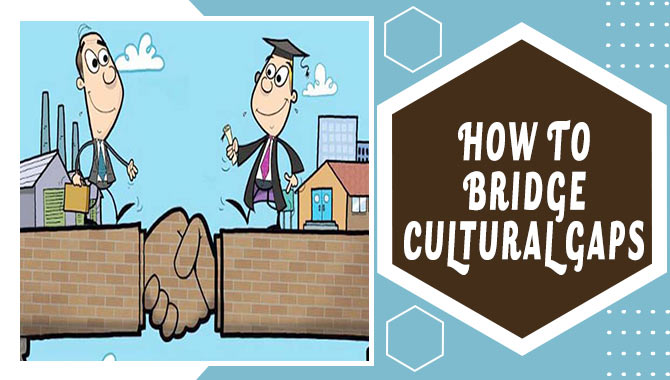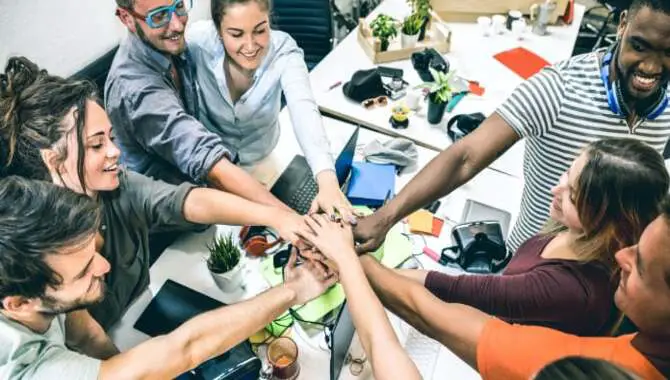Different ways of thinking, behaving, and living can cause cultural gaps. They can manifest in communication and interaction between people from different cultures.
To bridge cultural gaps, knowing how cultural norms and values can affect interactions is essential. It is easier to connect with people from the same background and culture. In business, it’s necessary to understand the differences between people in the same country and culture. When planning a trip, you must understand cultural differences and how they affect your customers.
People from different backgrounds can have different expectations and preferences, which leads to cultural differences in communication. These differences can also affect how customers perceive your brand from diverse backgrounds. This blog will help you bridge cultural gaps and recognize them.

10 Ways To Bridge Cultural Gaps

A cultural gap is between two cultures or groups of people. Differences in values, beliefs, or practices can create it. Understanding and respecting different cultural values is essential before building relationships and trust. Open communication is the key to developing healthy relationships and creating a sense of partnership. By hosting cultural events or workshops, businesses can promote awareness and understanding among different cultural groups. Before engaging in any activities, a plan for bridging cultural gaps is also essential.
1.Recognize Cultural Differences.
It can be challenging to bridge cultural differences if you’re unaware of them. To effectively overcome this obstacle, it’s essential to recognize the differences and understand how they affect how people communicate and interact. One way to bridge cultural gaps is by asking questions about different cultures. Remember to be respectful in your inquiry and avoid making assumptions about a culture based on superficial characteristics.
Instead, please focus on the deeper aspects of a culture, such as its values, beliefs, and way of life. By engaging in open and honest communication with people from different cultures, you can learn about their ways of life and integrate those values into your own.
2.Recognize Individual Differences.
It’s important to remember that everyone has a unique culture and background. When interacting with people from different cultural backgrounds, it’s essential to be aware of the cultural norms and expectations of the person you’re interacting with. Additionally, be respectful of the person’s culture and avoid making assumptions about their beliefs or values. By taking these steps, you can build rapport and increase the chances of successfully bridging cultural gaps.
3.Be Aware Of Your Behaviors.

When dealing with cultural differences, it’s vital to be aware of your behaviors and be honest and respectful when interacting with people from different cultures. When listening and understanding what the other person is saying, be open to new experiences and ideas.
If you encounter any difficulties or feel out of place in a cultural exchange, do not hesitate to reach out for help. By being aware of your behaviors and respecting the cultural differences of others, you can bridge cultural gaps and build mutually beneficial and fulfilling relationships.
4.Show Respect.

Respecting the customs and traditions of the people you’re visiting is important. This can mean following their lead when it comes to behavior and dress. It also means you should try to learn about their culture and history. However, don’t take things too seriously. Remember that everyone has their perspective, which makes cultures interesting. By taking a step back and viewing cultural differences from a more objective perspective, you can better appreciate the value of cultural diversity in our global society.
5.Speak Clearly.

When speaking to someone from a different culture, it’s essential to be aware of the cultural norms and customs. This can help you better understand the other person’s background and expectations. Additionally, it’s vital to ask questions to understand the other person’s perspective. For example, you might ask about the person’s personal life, work life, or cultural beliefs and values. By listening carefully to what the other person has to say, you can better understand the situation at hand.
Besides, it’s important to speak slowly and distinctly, using simple words that the other person will understand. This way, you can avoid making assumptions about the person’s wants or needs. Besides, be prepared to learn more about the person’s background and expectations before engaging in a conversation.
6.Be Transparent.
When bridging a cultural gap, it’s essential to be transparent about your intentions. While sharing aspects of your culture with the other person is okay, don’t try to force your own culture on them. Instead, be patient and allow the other person to come to their conclusions about the topic.
This will show that you respect the other person and value their perspective. Additionally, when interacting with someone from a different cultural background, frame your interactions positively so that the other person feels respected and appreciated.
7.Clarify And Ask For Clarification When Needed.
When interacting with people from different cultures, it’s essential to be aware of cultural norms and customs. Additionally, it’s helpful to pay attention to the individual’s social context. When encountering cultural differences, clarify any misunderstandings or awkwardness by asking for clarification.
Understanding cultural differences can help improve communication and foster a better working relationship. By clarifying any misunderstandings or awkwardness, you can ensure that both parties are on the same page and achieve their goals more smoothly.
8.Involve The Whole Group.
One way to bridge cultural gaps is by involving the whole group. This can be done through discussions at dinner or during recreational activities. Applying everyone in the cultural exchange process will help everyone feel more comfortable participating in group activities. Another critical step to bridging cultural gaps is to be open-minded and respectful of each individual’s cultural beliefs.
By engaging in these activities, everyone can share and learn from each other, leading to a more cohesive and diverse group. By engaging in this process, you can help foster a positive and respectful atmosphere that will enable group interactions to be productive and effective.
9.Give Credit When It Is Due.
When bridging cultural gaps, it is essential to be aware of cultural norms and etiquette. Giving credit is also due to respecting a critical and respecting person’s time and resources. The following is vital. These simple tips can create a more positive and productive cultural exchange.
When you’re doing this, make sure to be respectful and avoid attacking or criticizing others. Instead, focus on understanding their points of view and why they have chosen to act in a particular way. Only then can you develop a constructive dialogue that will help both parties understand each other better.
10.Recognize That People Learn At Their Pace.
It’s vital to be patient when learning about cultural differences with others. People learn in their own time and at their own pace. When interacting with the person, they must be conscious of their culture and background. You should also be aware of your words and actions when interacting with people from different cultures.
For instance, it is best not to impose your beliefs on others but rather understand how they view the world. If you are attempting to bridge cultural gaps, remember to be respectful and tolerant of different perspectives. This will help you both learn and grow from the experience.
Why We Need To Bridge Cultural Gaps
The gap between people of different cultures can lead to misunderstandings and tension. But cultural differences are essential to diversity, and embracing differences can bring about a sense of belonging and harmony. In the modern world, it is vital to understand different cultures as countless factors influence our lives, from technology to religion. We need to learn about other people’s cultures to build bridges of understanding. The more we know about diverse cultures, the more we can appreciate differences and the potential for fruitful partnerships.
Creating a more inclusive society involves teaching children about diverse cultures early. By immersing children in various cultures early on, we can help them develop a broader perspective and be more accepting of others. Finally, we can work towards closing the gender gap by promoting feminism and women’s rights. By fostering equality between men and women, we can reduce differences in perspectives that may cause tensions between the two groups.
Conclusion
Bridging cultural gaps can be difficult, but it is essential to remember that it is possible with the right approach and a bit of effort. By understanding the cultural differences between you and your employees, you can begin to bridge the divide and create a more cohesive work environment. To communicate, we rely on language. But language is a vehicle for sharing ideas, thoughts, and feelings. It is always up to the receiver to understand the cultural context in which the message was intended.
If you seek to build positive relationships with people from other cultures, the best way to start is by learning about the culture from those who have already made the transition. Many online resources can help you learn more about bridging cultural gaps and adapting your language and communication style to ensure successful communication.
Frequently Asked Questions

I’m a writer and blogger who loves to talk about entertainment, culture, and relationships. I love to share my thoughts and insights on these topics, and I’m always looking for new ways to engage with my readers. I’m also a big fan of learning new things, so I’m always exploring new areas of interest.
